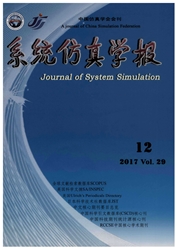

 中文摘要:
中文摘要:
拥挤交通流交织区交通运行特征表现为频繁的车道变换和冒险型的驾驶行为,目前广为使用的仿真模型在进行交织区拥挤车辆模拟分析时一般需经过复杂的参数标定过程。研究从分析拥挤状况的交织区运行行为特性出发,利用多智能体建模的优势,在传统的强制性车道变换模型中引入换道“协作”机制、换道冲突“协商”机制,建立了相应的仿真模型TESS。然后以上海市快速路系统两处交织区汇入汇出仿真为例,根据实测结果和成熟仿真系统VISSIM、PARAMICS的实验比较分析,验证了仿真模型的有效性。
 英文摘要:
英文摘要:
The traffic operation of weaving sections can be characterized by frequently lane-changing and aggressively driving. Currently the broadly used micro-simulation models must be calibrated when they were used to simulate the congested weaving sections. This study is based on an analysis of the driving behaviors under congested weaving sections. Using the agent modeling technology, the cooperative lane-changing and Lane-changing conflict negotiation model were adopted using the object-oriented method to the traditional mandatory lane-changing model, the TESS simulation model was developed. Based on two weaving section field experiment studies on the expressway in Shanghai, the result were compared with that of VISSIM and PARAMICS, the TESS model was proved to be valid and efficient.
 同期刊论文项目
同期刊论文项目
 同项目期刊论文
同项目期刊论文
 期刊信息
期刊信息
